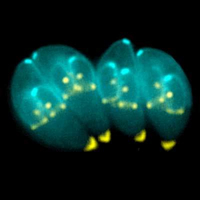Yup, it’s the day we wait for each year. The day that the Secretariat of the Convention on Biological Diversity (CBD) has set aside to celebrate. And this year, it’s all about Biodiversity and Climate Change. Yay! We learn that an increase of only 2.5 degrees C will mean “50 million more people facing hunger” and that “conserving certain species such as mangroves and drought resistant crops can reduce the disastrous impacts of climate change effects such as flooding and famine”.
If you were looking for more on biodiversity and agriculture, look no further. Our friend Andy Jarvis, along with colleagues Annie Lane and Robert Hijmans, has published a paper looking at how climate change will affect the survival of crop wild relatives in three species: peanut, cowpea and potato. There’s a press release here (and coverage in Reuters). Bottom line: things don’t look good.
Climate change affects agriculture from at least two directions. It will require diversity as a sources of traits to cope with the effects, by breeding new varieties. And yet it threatens that very diversity with extinction, especially when, like the peanut, you can move your seeds less than a metre each year in search of more suitable growing conditions.
Two solutions present themselves, which is a nice symmetry. Try to ensure that natural conservation efforts in parks and the like are designed with wild relatives in mind, giving slow-coaches like the peanut a helping hand if necessary. And collect more samples of agricultural biodiversity from the wild and from farmers’ fields to store in genebanks. Alas, this latter option has become more and more difficult as countries increasingly fear the rip-off tactics of bio-pirates. And who’s to blame for that? Step forward the CBD.
It’s an ironic world, eh?
 Toxoplasma gondii is a protozoan
Toxoplasma gondii is a protozoan